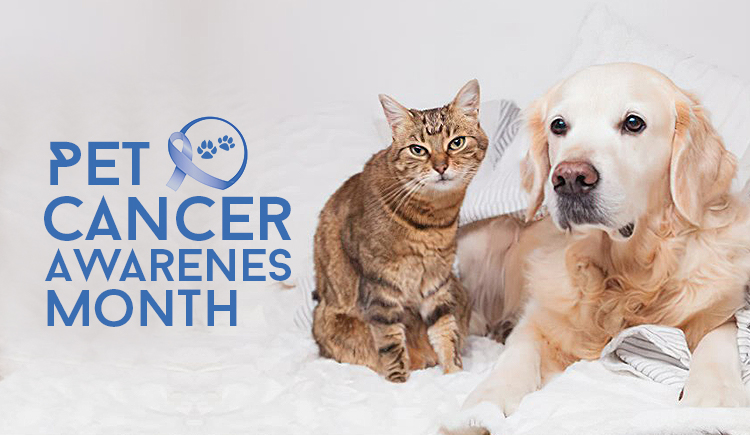
Every Year National Pet Cancer Awareness Month is celebrated. It was started in 2005 and created by Nationwide and the Animal Cancer Foundation with the goal in mind to increase awareness and fight cancer – the leading killer of pets.
One pet in every four is affected in its lifetime with cancer. It is the number one disease-causing death in dogs and cats. Through advancements in medicine, health line, and veterinarians we have come a long way in curing the disease and enhancing the longer life experience.
WHAT IS PET CANCER?
Cells and tissues grow abnormally in two ways–Benign and Malignant. Benign are non-cancerous, they do not affect other cells and neither spread to other areas of the body. But, On the contrary, malignant are cancerous they grow and spread haphazardly and even metastasize to other areas of the body. When your pet is prone to malignant cells they are affected with cancer.
WHAT ARE TYPES OF CANCER IN PETs?
1. Melanoma
Benign melanomas are often found on a dog’s head, toes, or back; usually round with raised mass. While malignant melanomas are found on a dog’s mouth, eye, or face and they cause lymph nodes to swell.
It can be treated by removing the tumor. But if it has been spread already the success rates are low and we have to cure it under a vet’s guidance and have to go for chemotherapy and vaccines.
2. Osteosarcoma
This is the most common bone tumor, commonly found in larger breeds. It can affect any breed of dog. This type of cancer is very aggressive and tends to spread very quickly. It causes severe joint pain, swelling, and inflammation around the tumor.
Read More: 7 Ways to Protect Pets from Fleas and Ticks
3. Mast Cell Tumors
This is a type of skin cancer common skin tumor in dogs. Its prevalent symptoms are swollen lymph nodes, loss of appetite or vomiting, and mass lesions. It can be treated through surgery, chemotherapy, palliative therapy, radiation therapy, and stereotactic radiation depending upon your vet’s recommendation.
4. Lymphoma
Lymphoma is a cancer of lymphocytes (blood cells) and lymphoid tissues. The most common kinds of canine lymphoma are multicentric lymphoma, alimentary lymphoma, mediastinal lymphoma, and extranodal lymphoma. It can generally be treated through chemotherapy.
5. Lung Cancer
It is common cancer in older dogs. Its symptoms are lethargy, difficulty breathing, poor appetite, and fever. It can be treated through surgery or chemotherapy is required to cure it.
WHAT ARE THE SIGNS AND SYMPTOMS TO DETECT ANY TYPE OF CANCER?
- Loss of weight and loss of appetite
- Bleeding or abnormal discharge from any body opening
- Difficulty eating or swallowing
- Lethargy or loss of stamina
- Persistent lameness or stiffness
- Difficulty urinating, defecating, or breathing
- Loss of appetite or difficulty eating
- Loss of interest in playing or exercising
- Unusually strong/foul odors
- Increased thirst and urination
- Respiratory changes
HOW TO PREVENT CANCER IN PETs?
Prevention of cancer is a still topic to research and provide concrete information on. But, various Vets’ recommendation is to maintain a healthy lifestyle with nutrition-based intake considering all the vitamins and minerals required for the body. Keep a regular yearly check-up of your pet.

